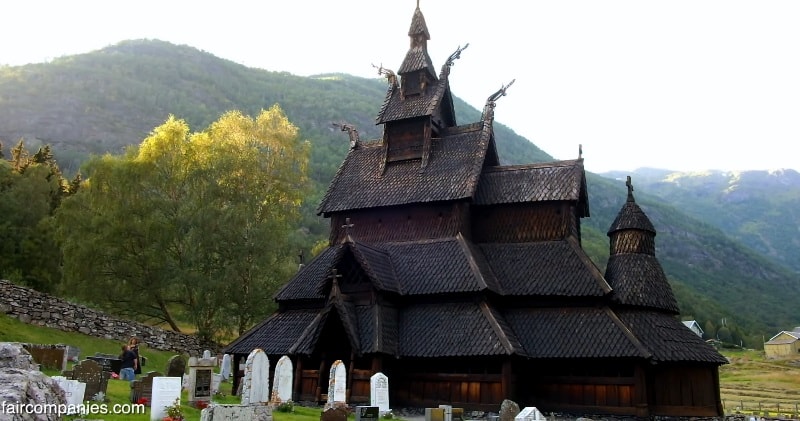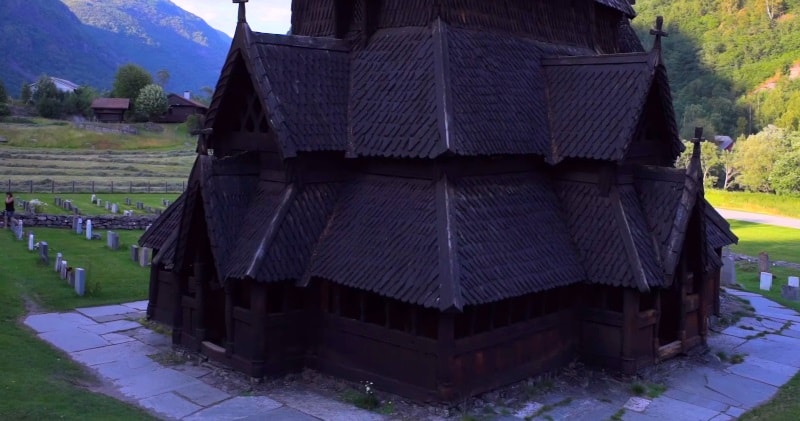With the conversion of Norway to Christianity (beginning around 1000 AD), wooden “stave” churches were built across the countryside. Over 800 churches were built in the country using “staves”, or thick wooden posts, for support, and Viking woodworking prowess (often built with just wood, without nails or glue.).
source/image: Kirsten Dirksen
Built sometime between 1180 and 1250 AD, the Borgund Stave Church is the best preserved of Norway’s 28 existing stave churches.
source/image: Kirsten Dirksen
We talked to one resident of Borgund (population 492) who explained some of the secrets to the wooden structures 800-year lifespan (e.g. the valley’s dry climate, the base of stones so no wood touches the ground, and 12th Century Norway’s colder climate which contributed to heartier trees).
Advertisement
Our guide explained that the carvings at the top of the church could have been a mashup for Christian and Norse symbols.
“From Christianity, you have the tree of life and also in Norse mythology you have the tree called Yggdrasil. The Viking era was pretty much over when the state churches began to be built here, but people hold on to their traditions. It wasn’t like a light switch to become a Christian.”












